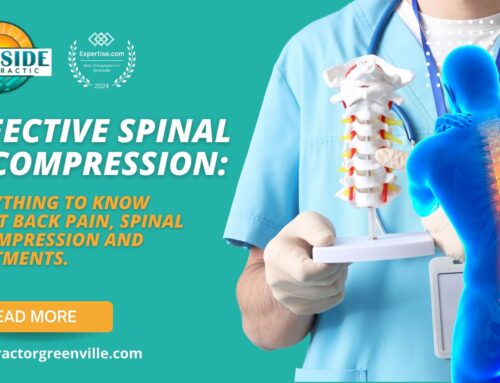Walking Spinal Decompression: Benefits of Walking for Spinal Health
Introduction
Maintaining spinal health is essential for overall well-being and quality of life. As the backbone supports our entire body, any issues with it can severely hamper our daily activities. For residents of Taylors, SC, Eastside Chiropractic PA offers specialized spinal decompression services designed to alleviate back pain and restore spinal function. But did you know that something as simple as walking can play a significant role in spinal decompression and overall spinal health?
What is Spinal Decompression?
Spinal decompression is a therapeutic technique aimed at alleviating pressure on spinal discs, nerves, and vertebrae. This pressure can be the cause of chronic back pain and discomfort. Spinal decompression can be achieved through various methods, including physical therapy, chiropractic adjustments, and specialized equipment designed to stretch and relieve tension in the spine. The primary objective is to promote healing and increase mobility.
Understanding the Role of Walking in Spinal Health
Walking is often underestimated as a form of exercise, but it offers numerous benefits for overall health and especially for the spine. Regular walking enhances cardiovascular health, improves mood, and significantly contributes to spinal health by promoting muscle engagement and circulation.
The Science Behind Walking and Spinal Health
When you walk, multiple muscles engage, supporting your spine and reducing the strain on your back. This muscle activation helps maintain proper spinal posture and alignment. Additionally, walking increases blood flow throughout the body, which facilitates the delivery of essential nutrients to spinal tissues, promoting healing and reducing inflammation.
Walking Spinal Decompression Techniques
Incorporating walking into spinal decompression therapy can be incredibly effective. It is essential to maintain the correct posture while walking, keeping your back straight and shoulders relaxed. Regular, moderate-paced walking sessions can be integrated into your daily routine, gradually increasing the duration as your comfort and endurance improve.
Eastside Chiropractic PA: Spinal Decompression Services
Eastside Chiropractic PA offers comprehensive spinal decompression services tailored to individual needs. Utilizing state-of-the-art techniques and equipment, our team ensures a personalized approach to spinal health. Patient testimonials speak volumes about the success achieved through our treatments, emphasizing our commitment to excellence and patient care.
Benefits of Walking for Spinal Decompression
Walking not only helps in decompressing the spine but also improves overall mobility and flexibility. Regular walks enhance posture, align the spine correctly, and reduce the dependency on pain medication by naturally alleviating discomfort. This simple activity can lead to significant improvements in spinal health and overall well-being.
Case Studies: Walking for Spinal Health
Numerous real-life examples illustrate the effectiveness of combining walking with spinal decompression therapy. Patients have reported reduced pain, improved mobility, and long-term benefits after consistently incorporating walking into their routines. These case studies underscore the importance of regular, moderate exercise for spinal health.
Combining Walking with Other Therapies
To maximize spinal health benefits, walking can be complemented with other therapies such as physical therapy, chiropractic care, and custom exercise plans. These combined efforts enhance overall therapeutic outcomes, ensuring a holistic approach to spinal health.
Preventative Measures Through Walking
Prevention is always better than cure. Incorporating walking into your daily routine can serve as a preventative measure against potential spinal issues. Simple tips like consistent daily walks, ergonomic workspaces, and regular stretching exercises can keep your spine healthy and aligned.
How to Get Started with a Walking Routine
Starting a walking routine is simple. Begin by setting realistic goals, choosing comfortable footwear, and creating a schedule that fits your lifestyle. Gradually increase your walking time and pace to build endurance without overstraining your back.
Challenges and Solutions
Maintaining a consistent walking routine can be challenging. Common obstacles include time constraints, weather conditions, and physical discomfort. However, solutions such as flexible scheduling, indoor walking options, and proper warm-up techniques can help overcome these challenges and keep you on track.
Additional Tips for Spinal Health
Beyond walking, consider other aspects of spinal health, such as ergonomic workspaces, regular stretching and flexibility exercises, and proper nutrition and hydration. These additional measures can collectively enhance your spinal well-being.
Conclusion
Walking is a simple yet powerful tool for maintaining spinal health and aiding in spinal decompression. Regular walking, combined with professional care at Eastside Chiropractic PA, can lead to improved spinal function, reduced pain, and a better quality of life. Don’t underestimate the power of putting one foot in front of the other when it comes to taking care of your spine.
FAQs
Can walking really help with spinal decompression?
Yes, walking helps improve blood circulation, engage spinal muscles, and reduce pressure on spinal discs, which effectively aids in spinal decompression.
How long should I walk each day for spinal health benefits?
It is recommended to start with 20-30 minutes of moderate-paced walking daily, gradually increasing the time as your endurance builds.
Are there specific walking techniques I should follow?
Maintaining a straight back, relaxed shoulders, and a steady pace is key. Ensure you wear comfortable footwear and keep your body posture aligned.
What other exercises complement walking for spinal health?
Yoga, stretching exercises, and core strengthening workouts complement walking and contribute to overall spinal health.
How soon can I expect results from a walking routine?
Improvements can be noticed within a few weeks of consistent walking, but long-term spinal health benefits are best achieved with ongoing routine and professional care.


